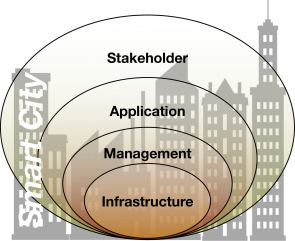Provides some details about the hydrologic cycle and then discusses the physical geology of groundwaters.
This book chapter advances SDG 14 by discussing measures of freshwater species diversity and how and why diversity varies among and within habitats. Also discussed are extinctions caused by humans and some of the associated consequences, as well as consequences of invasive species.
An Introduction to Green Nanotechnology - Chapter 3: Biological Sources Used in Green Nanotechnology
Interface Science and Technology, Volume 28, 2019, Pages 81-111
This book chapter addresses goals 9, 12 and 15 by looking at how green nanotechnology can facilitate sustainable methods leading to reduced environmental impacts, improved conservation, and the protection of resources and human health.
Elsevier,
Hunter's Tropical Medicine and Emerging Infectious Disease (Ninth Edition), 2013, Pages 148-156
This chapter supports SDGs 3 and 16 by exploring complex emergencies and how displaced populations are at increased risk of increased morbidity and mortality.Disasters, either natural or man-made, disrupt the baseline functioning of a community, including food, water, sanitation and health. The resiliency of a community to recover from a disaster depends on existing economic and social structures. Poverty and inadequate economic and social systems are prevalent in tropical regions, making them extremely vulnerable to disasters.
Although it may be an "invisible disability", people with all types of diabetes are protected under the Americans with Disabilities Act. This chapter contributes to SDG 3 by addressing the patterns, risk factors and prevention tactics for the epidemic of diabetes in the US population.
This book chapter addresses goals 12, 7, 11 and 15 by looking at the environmental and economic impact of the utilization of biomass resources.
Solar photovoltaic modules have suddenly emerged as one of the cheapest options for bulk electricity supply. In a recent Energy Policy article, Kavlak et al. (2018) describe a methodology for quantifying causes of such cost movements and apply it to photovoltaic modules. Their approach, however, overlooks the “butterfly effect” of serendipitously interacting people and events, without which photovoltaics likely would still be expensive.
#SmartME has been one of the first initiatives in Italy to realize a Smart City through the use of open technologies. Thanks to the use of low cost sensor-powered devices scattered over the city area, different “smart” services have been deployed having the Stack4Things framework as the common underlying middleware. In this paper, we present the results obtained after 2 years of project highlighting the vertical solutions that have been proposed in different areas ranging from environmental monitoring to parking management.
Background: The International Diabetes Federation (IDF) launched the Kids and Diabetes in School (KiDS) project in collaboration with the International Society for Paediatric and Adolescent Diabetes (ISPAD) and Sanofi Diabetes to inform and teach school staff, children and parents on the management of diabetes in school. Brazil and India were chosen as pilot countries. Methods: The evaluation was conducted using a qualitative methodology using semi-structured face to face in-depth interviews.
N-type Mg3Sb2-based Zintl compounds have attracted considerable interest in recent years for their high thermoelectric performance. Mg3Sb2-based compounds inherently have p-type transport properties because of the presence of intrinsic Mg vacancies. Therefore, eliminating Mg vacancies and increasing the electron concentration are crucial for achieving high-performance n-type Mg3Sb2-based materials. The addition of excess Mg in the initial composition and the doping of chalcogens (Te, Se, and S) at the Sb site have been the primary methods used to date.

